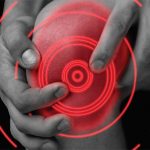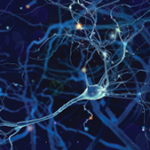As described by Dr. Schanberg, the consequences of acute pain during childhood may include changes in future pain processing, fear and avoidance of healthcare, reduced effectiveness of analgesics later, reduced procedural effectiveness, and distress for parents and healthcare providers. Preterm infants, who receive repeated noxious stimulation show increased stress responses to subsequent procedures and higher somatization scores and increased thermal pain sensitivity as adolescents. Circumcised infants show stronger pain responses during routine vaccinations, and young children exposed to repeated painful procedures experience more pain and anxiety as they undergo more procedures.9-11 The problem is not limited to infants and small children. The Danish Prospective Study, which included 650 children, showed that low back pain in children at age 14 years predicted low back pain, disability, and hospitalization 25 years later.12
Pain research is challenging in any patient population, says Dr. Schanberg, but the pediatric realm presents some unique problems. These include devising an age-appropriate pain assessment and accounting for the changes caused by growth, the onset of puberty, and numerous immunologic, neurologic, and psychosocial variables. The ethics of research are more complex in children because of the need to protect a vulnerable patient population. “Pain may also have a strong genetic component in children, too,” she says.
“We’ve learned that children’s pain is more plastic than that of adults,” says Dr. Schanberg. “This means that environmental and psychological factors may exert a more powerful influence on pain perception than in adults.” Citing some of her own research, Dr. Schanberg describes how negative mood and stress increased daily symptoms of pain, fatigue, and stiffness in children with juvenile idiopathic arthritis (JIA). “It’s interesting that in adults with chronic pain, stress and mood predict pain tomorrow and the next day, but in children they only predict pain today, possibly because children live more in the moment,” she speculates. Parent stress also predicts child pain and depression, she says. “Children do better when parents respond to their pain sympathetically than children whose parents do things that help them avoid their own distress,” she notes. “If parents catastrophize about their child’s pain, they tend to restrict activities to reduce their own distress. That tends to increase the child’s disability.”
Dr. Schanberg offers this take-home message for people who treat pain in children: “Pain starts early. Pain experiences in very young children impact the way their pain processing system is put together and may continue to affect pain perception when they are adults.”



